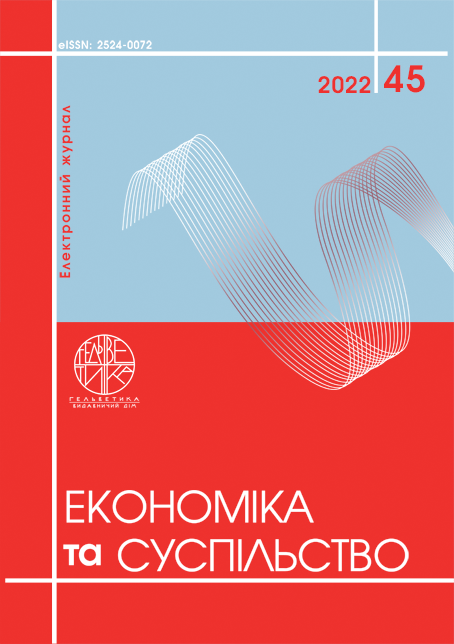ОЦІНЮВАННЯ РИЗИКУ КОНВЕРГЕНЦІЇ СИСТЕМ ПРОТИДІЇ ВІДМИВАННЯ ГРОШЕЙ ТА КІБЕРБЕЗПЕКИ
Анотація
Дана стаття присвячена актуальному питанню визначення ризику конвергенції систем протидії відмиванню грошей та кібербезпеки. У дослідженні запропоновано науково-методичний підхід до його оцінювання, який передбачає реалізацію чотирьох етапів. Базу емпіричних даних сформували Національний індекс кібербезпеки та Індекс протидії відмиванню коштів для 114 країн світу за 2022 рік. На першому етапі було проведено кластеризацію країн за ризиком відмивання коштів, що було виконано за допомогою «Silhouette analysis» та кластеризації «k-means». На другому етапі аналогічна процедура була проведена для отримання сегментів країн щодо рівня їх кібербезпеки. На третьому етапі було запропоновано інтегральний індекс конвергенції, який було розраховано із використанням методів нормалізації та середньогеометричного. За результатами кластерного аналізу було визначено 9 груп ризику конвергенції систем протидії фінансовим та кіберризикам для різних країн світу. Четвертий етап було присвячено розробці прогнозної моделі ризику конвергенції на основі класифікаційного дерева рішень.
Посилання
Eling, M. & Schnell, W. (2016). What do we know about cyber risk and cyber risk insurance? The Journal of Risk Finance, 17(5), 474–491. DOI: https://doi.org/10.1108/JRF-09-2016-0122.
Eisenbach, T. M., Kovner, A. & Lee, M. J. (2022). Cyber risk and the U.S. financial system: A pre-mortem analysis. Journal of Financial Economics, 145(3), 802–826. DOI: https://doi.org/10.1016/j.jfineco.2021.10.007
Gatzert, N. & Schubert, M. (2022). Cyber risk management in the US banking and insurance industry: A textual and empirical analysis of determinants and value. Journal of Risk and Insurance, 89(3), 725–763. DOI: https://doi.org/10.1111/jori.12381
Kozhedub, Yu. (2017). Analiz dokumentiv z keruvannia ryzykom kiberbezpeky [Analysis of cybersecurity risk management documents]. Information Technology and Security, 5(1), 82–95. [in Ukrainian]
Fabris, N. (2022). Impact of Covid-19 Pandemic on Financial Innovation, Cashless Society, and Cyber Risk. ECONOMICS, 10(1), 73–86. DOI: https://doi.org/10.2478/eoik-2022-0002
Vučinić, M. & Luburić, R. (2022). Fintech, Risk-Based Thinking and Cyber Risk. Journal of Central Banking Theory and Practice, 11(2), 27–53. DOI: https://doi.org/10.2478/jcbtp-2022-0012
Uddin, M. H., Ali, M. H. & Hassan, M. K. (2020). Cybersecurity hazards and financial system vulnerability: a synthesis of literature. Risk Management, 22(4), 239–309. DOI: https://doi.org/10.1057/s41283-020-00063-2
Grody, A. D. (2020). Addressing cyber risk in financial institutions and in the financial system. Journal of Risk Management in Financial Institutions, 13(2), 155–162.
Institute of Risk Management (2022). Institute of Risk Management - expert Risk Predictions 2018 and the Risk Agenda 2025. Retrieved from: https://www.theirm.org/news/institute-of-risk-management-expert-risk-predictions-2018-and-the-risk-agenda-2025/.
Basel AML Index (2022). Basel AML Index. Assessing Money Laundering Risks Around The World. Retrieved from: https://index.baselgovernance.org/.
Haro G. Shape from silhouette consensus and photo-consistency. Retrieved from: https://repositori.upf.edu/bitstream/handle/10230/35708/haro_ icip14_shape.pdf;jsessionid=21B7F0CD85AB9435B87CD7AB8D338316?sequence=1.
E-Governance Academy (2022). National Cybersecurity Index. Retrieved from: URL: https://ncsi.ega.ee/.


